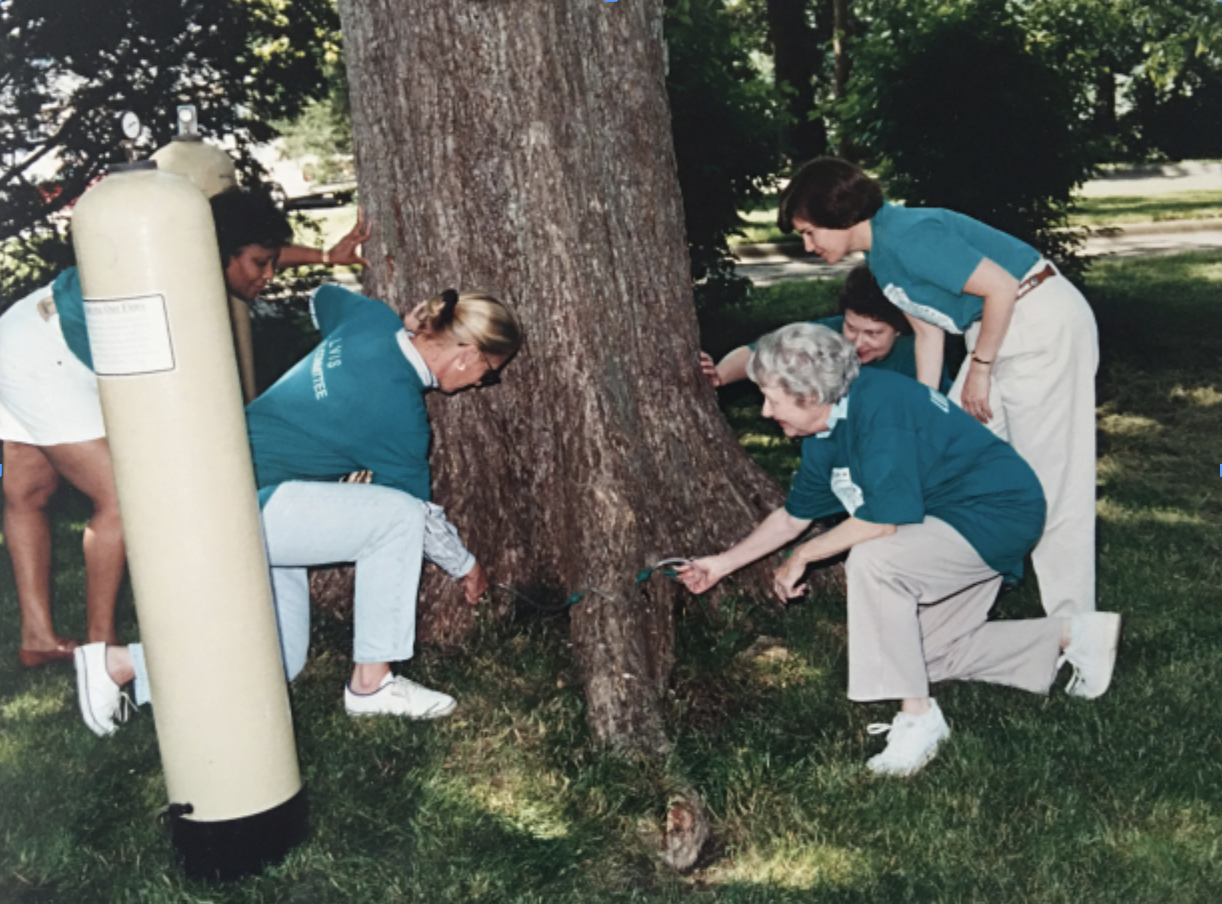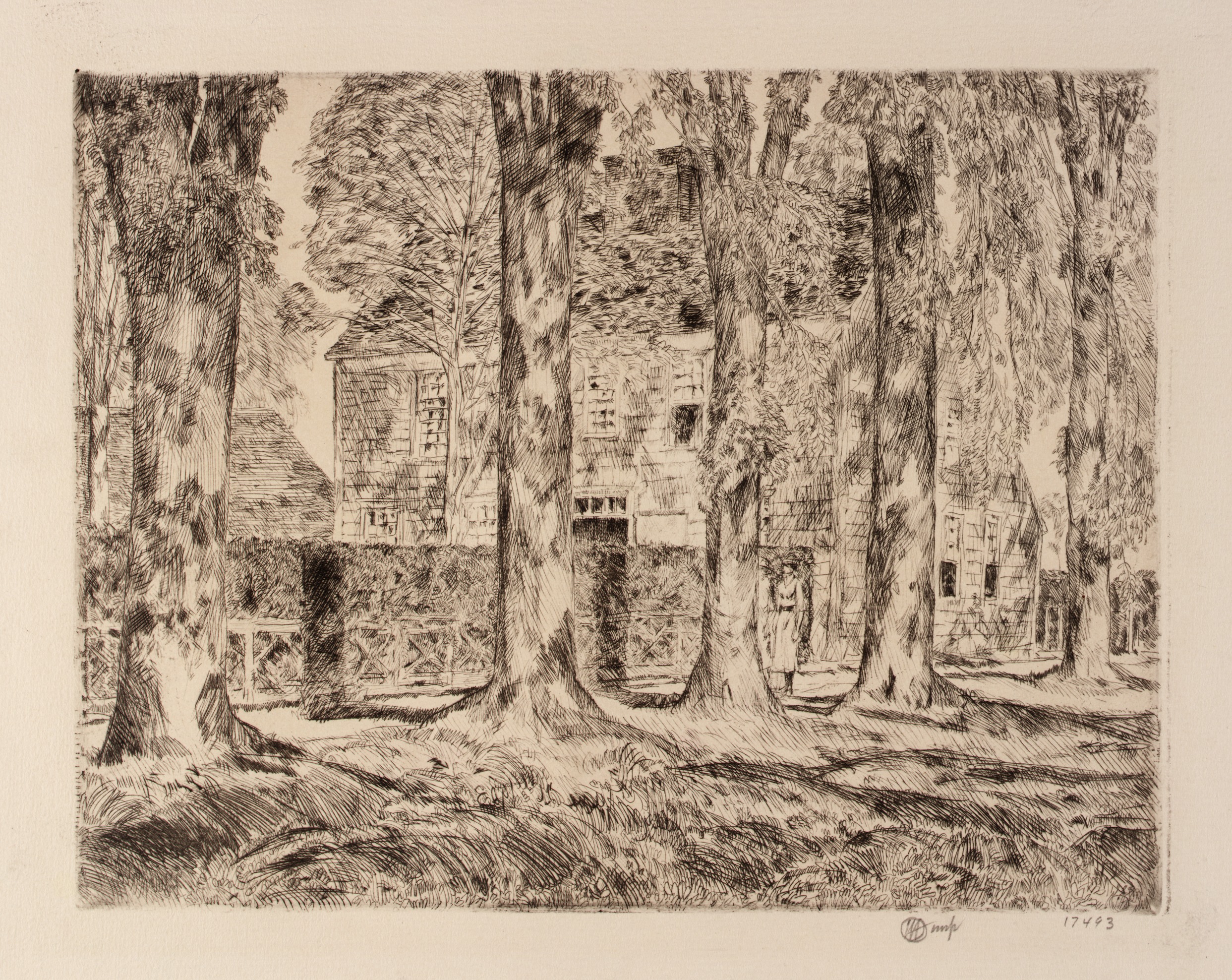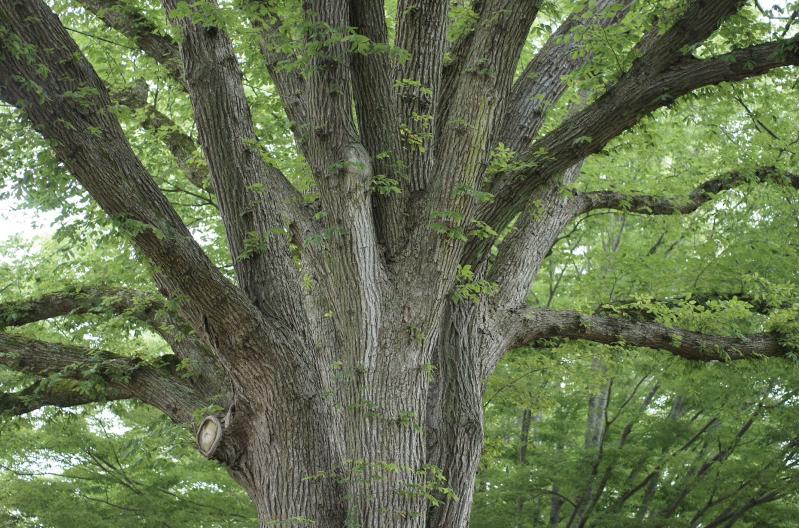There’s a calming nostalgia as you approach East Hampton Main Street, with its familiar canopy of elm trees framing the street and casting dappled shade on the sidewalks. The hush of shady green greets you as a cool breeze blows in from the ocean. The Norman Rockwell painted-shingle buildings wouldn’t feel the same without the arching trees, whose branches extend like arms offering a welcoming embrace.
But East Hampton didn’t always look this way. The central landscape of the village was an open, grassy plain when early European settlers arrived, rather like a meadow. That’s why it was chosen as the settlement place. The woods that spread out around the settlement — to the north, west, and east — were quickly cleared for farming or felled for firewood. As late as the end of the 19th century, you could see the ocean clearly from the church on the broad central common that is now Main Street.
Yet by the end of the 19th century, the treeless landscape began to feel a bit barren to residents, with no respite from the blazing sun in summer or the harsh winds of winter.
In 1895, 40 women decided to change the look of the village. They formed the Ladies Village Improvement Society to improve its appearance — sprinkling water to keep the dust down in the roads, planting flowers at the railroad station, pumping water into Town Pond — and raising money to plant trees. Over the course of its 126 years, the L.V.I.S. has planted thousands and, since the 1950s, fought hard against the disease that has decimated elms around the country and, despite their heroic efforts, here, too: According to Olivia Brooks, who leads the society’s tree committee, only about 100 of the 3,500 or so trees the L.V.I.S. maintains on village-owned property today are elms.
The L.V.I.S., with its prescient tree program, is one of the oldest active women’s service organizations in the country. Its emblem is the elm. Brooks’s own fondness for them dates back to her childhood, when she would ride her bike to the library under their arches along Main Street.
Elms are the quintessential American tree. In 1646, two years before East Hampton’s founding, elms were planted on Boston Common to provide shade to travelers. Near the Common, more than 100 years later, the Sons of Liberty would gather under another elm, the famed Liberty Tree, to talk about freedom and plan for the American Revolution. Today, there are more than 5,000 Elm Streets across the country — proof positive of its place in our hearts.
How do you know which of our trees are elms? Look up. Next time you walk along Main Street, observe which trees’ limbs reach out farthest to shade the street. Those with the greatest span are elms. They have jagged-edged leaves on uplifting branches that extend as far as 50 feet from the trunk. Their roots extend nearly as far as their branches, burrowing under the compacted soil of sidewalks and roads and creating stability — a counterweight— as they reach for sustaining water.
Elms’ branches are remarkably stable, with an interlocking ring structure that makes them less likely to snap above a streetscape. This strength also makes elm wood an ideal choice for wagon wheels and hockey sticks (although they can be a challenge to approach with a hand saw).
The oldest elms in America have survived 200 years. Perhaps it is this longevity that accounts for some of our romanticism about them: They are a constant, and it is a pleasure to know that the shade we are enjoying was similarly enjoyed by generations before us.

But there’s a restlessness to that nostalgia. How long will the elms be with us?
East Hampton’s iconic elms were dealt one of their first serious blows, literally, in the Hurricane of 1938.
According to a remembrance by Essie Vetault, a member of the L.V.I.S. tree committee at the time of the storm, September 21 began like any normal morning at summer’s end. She played her usual round of morning golf. “The wind increased as we played along,” she wrote, and by about 11 a.m., it was too windy to continue the game. The intensifying wind and rain weren’t enough to deter the tree committee, however, which met as planned . . . until a gust shattered a window, slashing a member’s knee. The ladies headed home. Before the next day dawned, the hurricane had leveled buildings, carried houses into the surf, and toppled trees throughout the East End. In the storm’s wake, Gilmore Clark, a landscape architect who had worked on the World’s Fair at Flushing Meadows, led East Hampton’s efforts to restore the tree-lined vistas.
That decade also heralded the arrival of a more enduring threat to the trees: Beetles carrying the deadly fungus that causes Dutch elm disease were first detected in the 1930s and have since caused hundreds of thousands of elms to perish across the country.
There’s no cure for Dutch elm, but an injection of fungicide offers some protection. The L.V.I.S. oversees those operations, and is ever vigilant, ensuring that sick limbs are removed swiftly — as a gangrenous limb might be removed by a surgeon. Sometimes it’s too late.
Pale-yellow patches of leaves are a telltale sign of Dutch elm disease, which travels through a tree’s vascular system, carrying the ruthless fungus from limb to limb to the far reaches of its broad canopy. What’s more, the disease also surges underground, through the tree’s roots, allowing the fungus to pass from one tree to another if the trees are close enough for roots to commingle.
The glorious rows of elms along Main Street have been susceptible for nearly 100 years. The Sisyphean struggle with Dutch elm disease and the loss of so many trees in their prime have been a challenge to those who toil to save as many elms as possible. Cooperation between the L.V.I.S., East Hampton Village, and New York State has been essential over the years. Main Street is also Route 27, a state road requiring another layer of bureaucratic oversight.
The women of the L.V.I.S. acquired authorization to care for trees on state property decades ago, but, all the while, diseased trees were sometimes allowed to grow along Route 27 in neighboring towns and hamlets — and a diseased tree is a threat to the health of any elm within a 15-mile radius. A front-page article in The East Hampton Star, in October 1963 — titled L.V.I.S. Wages Dutch Elm Disease War — chronicled the tree committee’s frustration. “All of our tree work will be nullified and all the elms on this end of Long Island will be endangered,” one member complained to State Assemblyman Perry B. Duryea Jr., “unless this Typhoid Mary is hastily checked.”

Fondness for East Hampton’s elms runs deep. More than just trees, they’re part of our identity. Their caretakers grow to know each one intimately. In the tree committee’s annual report in 1966, Jane Schabbehar Embury — wife of Aymar Embury II, architect of the Lincoln Tunnel and Triboro Bridge — recalled the encyclopedic knowledge of a man named LeRoy Craner, who lived on Osborne Lane and ran a tree-surgery business. “One day when I was speaking of this tree and that tree that had been reported as having trouble,” Embury said, “and he already knew about them and suggested a treatment. I said, ‘Why, I believe you know every tree in this village!’ and in his quiet way, he said, ‘Yes, I do. They are like my family.’ And you know, it is rather catching. I find that I, too, have come to know nearly every tree in the village, and some of the memorial trees I even call by name.”
After diseased elms were cut down near the Star office in 1973, Everett T. Rattray, then the editor and publisher of the paper, wrote about the newly exposed view from his office window. “With the removal of so many trees, this end of the village begins to look as it did long ago, after East Hampton people had burned most of the wood at hand and before the do-gooders had planted the elms we cherish today. Our predecessors in these parts were not so sentimental about trees as we are. They cherished the useful ones, and planted shade trees where necessary, but generally did without the large numbers of them that we erroneously associate with the old times.”
Rattray surmised that, given their size, the newly felled elms had been planted after the Hurricane of 1938, and was pessimistic about the future of the remaining elms. By the 1970s an estimated 80 of the originals remained on Main Street, fewer than a third of the 300 that had been planted across the village. Rattray waxed nostalgic about the “golden era of ornamental trees in these parts — a golden era of appreciation and cultivation between the earlier times of harsh practicality, and the later time of the Dutch elm disease.”
Over the years, other kinds of trees have filled the spaces left by the lost elms. Maples, lindens, and oaks have joined the streetscape along Main Street. This variation is a vital strategy for both tree health and biodiversity.
Doug Tallamy, an entomologist whose body of work focuses on the interconnectedness of birds, trees, and insects, recommends planting 70 percent native plants to support wildlife. Native trees play a vital role in the food web for birds. Not all bugs are bad, and many of the caterpillars and soft-bodied insects that live on native trees provide much-needed food for fledglings. We have seen a drastic decline in bird populations, with nearly a third lost in the past 50 years according to the journal Science. This factor is an important consideration when planting trees. Nonnative plants rarely provide the necessary familiar sustenance for the food web. The original elms, Ulmus Americana, are native.
Thankfully, several elm nativars (native trees cultivated for traits ranging from disease resistance to tree shape)show promising resistance to Dutch elm. Among those are elms bearing the names Jefferson, Princeton, and Valley Forge. Tallamy notes that elm nativars bearing enough similarity to the native elms would serve as good host plants for the soft-bodied insects that most songbirds rely on to feed their fledglings.
The Asian elm, Zelkova, doesn’t have the same gracious presence as the American elm; its canopy doesn’t fan out as broadly. “They can look like lollipops,” Olivia Brooks said of the elm cultivars that tree nurseries more coyly describe as having “an upright round habit.”
The L.V.I.S. tree committee does what it can to stay one step ahead. Members monitor the existing trees and work in concert with tree experts who routinely treat vulnerable elms with fungicide. This year, they are closely watching the precarious health of three mature elms.
Older elms with ragged limbs are particularly susceptible to illness, and faltering health from broken limbs or human-inflicted injury makes the grand dames we love that much more vulnerable.
When it’s time to make the tough decision to remove an ill — or aged and overly fragile — tree, “I feel like I’m losing a friend,” Brooks said.

